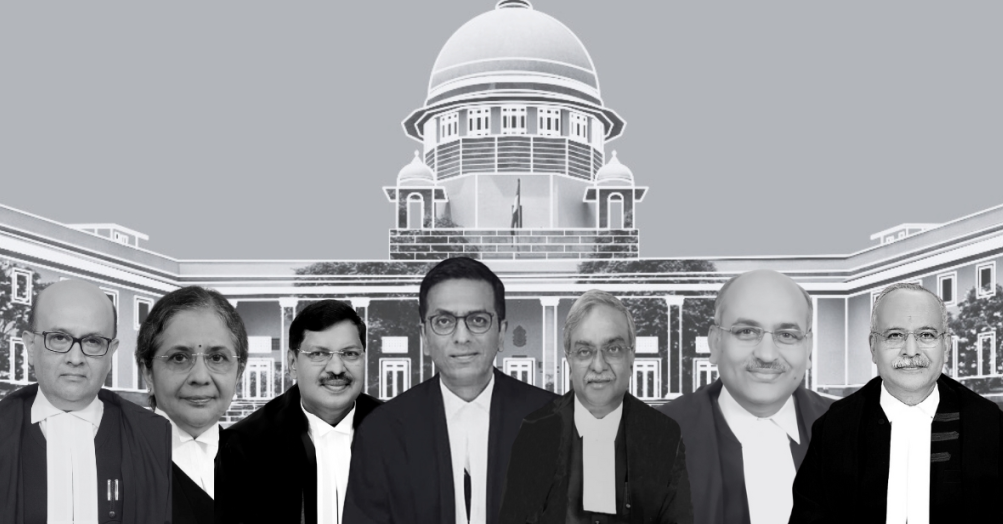Does Data Support the Need for Quota Subdivision? (GS Paper 2, Polity)

Context of Reservation in India
- India's reservation system was established to address long-standing caste-based discrimination, granting preferential access to education, employment, and political representation for marginalized communities such as Scheduled Castes (SCs) and Scheduled Tribes (STs).
- This policy aims to level the playing field, though its effectiveness has been questioned in recent years.
- In particular, debates have surfaced regarding whether the benefits of reservation are being equitably distributed among all subgroups within the SC category.
- The Supreme Court has recommended the implementation of a "quota-within-quota" policy to address these disparities, sparking discussions about whether this approach is justified by actual data.
Historical Development and Challenges
- The roots of India’s reservation policy trace back to Dr. B.R. Ambedkar’s vision of promoting social justice through affirmative action.
- Despite its noble intentions, the reservation system has faced challenges, as not all subgroups within the SC community have benefitted equally.
- Some groups, like those in urban areas or with higher socio-economic status, have reportedly seen more advantages, while others continue to lag behind.
- This has led to calls for a more targeted redistribution of reserved opportunities.
Disparities within SC Subgroups
In several states, disparities among different SC subgroups are evident. For example:
- Punjab: The state introduced a subdivided quota system in 1975, specifically designed to uplift the most disadvantaged SC subgroups, such as Mazhabi Sikhs and Balmikis. This approach has helped reduce inequality within the SC category.
- Bihar: In 2007, Bihar established a "Mahadalit" category to support the most marginalized SC groups. However, political influences expanded the group to include all SCs, which diluted the program’s effectiveness.
- Andhra Pradesh and Tamil Nadu: These states have seen relatively balanced outcomes for major SC subgroups, indicating that further subdivision of quotas may not be necessary in these areas.
Overall, the data suggests that while disparities persist within the SC community, the gap between SCs and non-SCs remains significantly larger, highlighting that systemic inequalities extend beyond just internal SC subgroups.
Barriers to Accessing Reserved Benefits
- While reservation policies aim to benefit marginalized communities, a significant issue lies in access.
- Data from the India Human Development Survey (IHDS) reveals that a considerable number of SC households, particularly in states like Uttar Pradesh and Bihar, face difficulties in acquiring essential caste certificates, which are needed to avail of reserved benefits in education and employment.
- This lack of access underscores the need for reforms that focus on improving the implementation and accessibility of reservation, rather than simply subdividing quotas.
Potential Issues with Quota Subdivision
- Though the idea of a "quota-within-quota" system has worked in some states, its widespread application could lead to complications.
- In states where SC groups have comparable socio-economic outcomes, further subdividing quotas may not result in significant improvements.
- Additionally, there are concerns that such a system could be politically manipulated, as seen in Bihar, where the expansion of the "Mahadalit" category diluted its impact.
- Another contentious proposal linked to the reservation debate is the "creamy layer" exclusion, which would prevent more economically advantaged SC members from benefiting from quotas.
- While this could theoretically make the system more equitable, experts warn that economic status may not fully eliminate caste-based discrimination.
- Instances of social exclusion and untouchability persist, suggesting that caste identity remains a powerful determinant of inequality, regardless of economic mobility.
Importance of Updated Data
- A key issue in revising India's reservation policy is the need for updated, accurate data.
- The national Census, which is currently delayed, remains the most comprehensive source of information on caste-based disparities.
- Without current data, any reforms to the reservation system risk being based on outdated or inaccurate assessments of socio-economic realities.
- For policies to be truly effective in reducing inequality, they must reflect the latest demographic and socio-economic trends.
Conclusion
- India's reservation system has played a crucial role in promoting social equity for marginalized communities, particularly SCs and STs.
- However, the internal disparities within the SC category highlight that more targeted interventions may be needed in certain regions.
- While a quota-within-quota system might be beneficial in states with pronounced inequality, it is not a universal solution.
- Ultimately, improving access to reserved opportunities, rather than just subdividing quotas, should be the primary focus of future reforms.
- Moreover, policies should be guided by robust, up-to-date data, ensuring that any changes to the reservation system are aligned with current realities and continue to serve their intended purpose of social justice.


